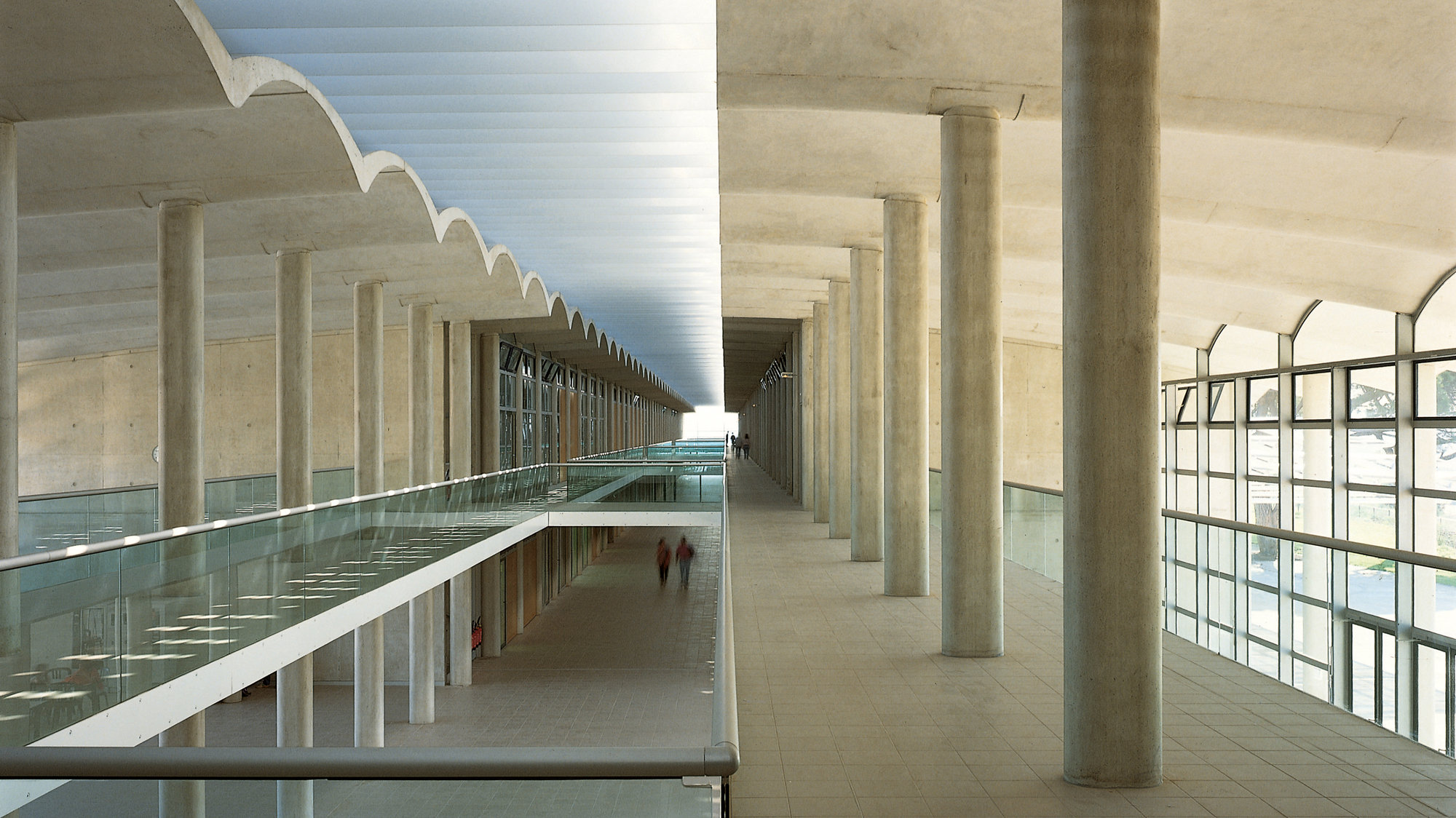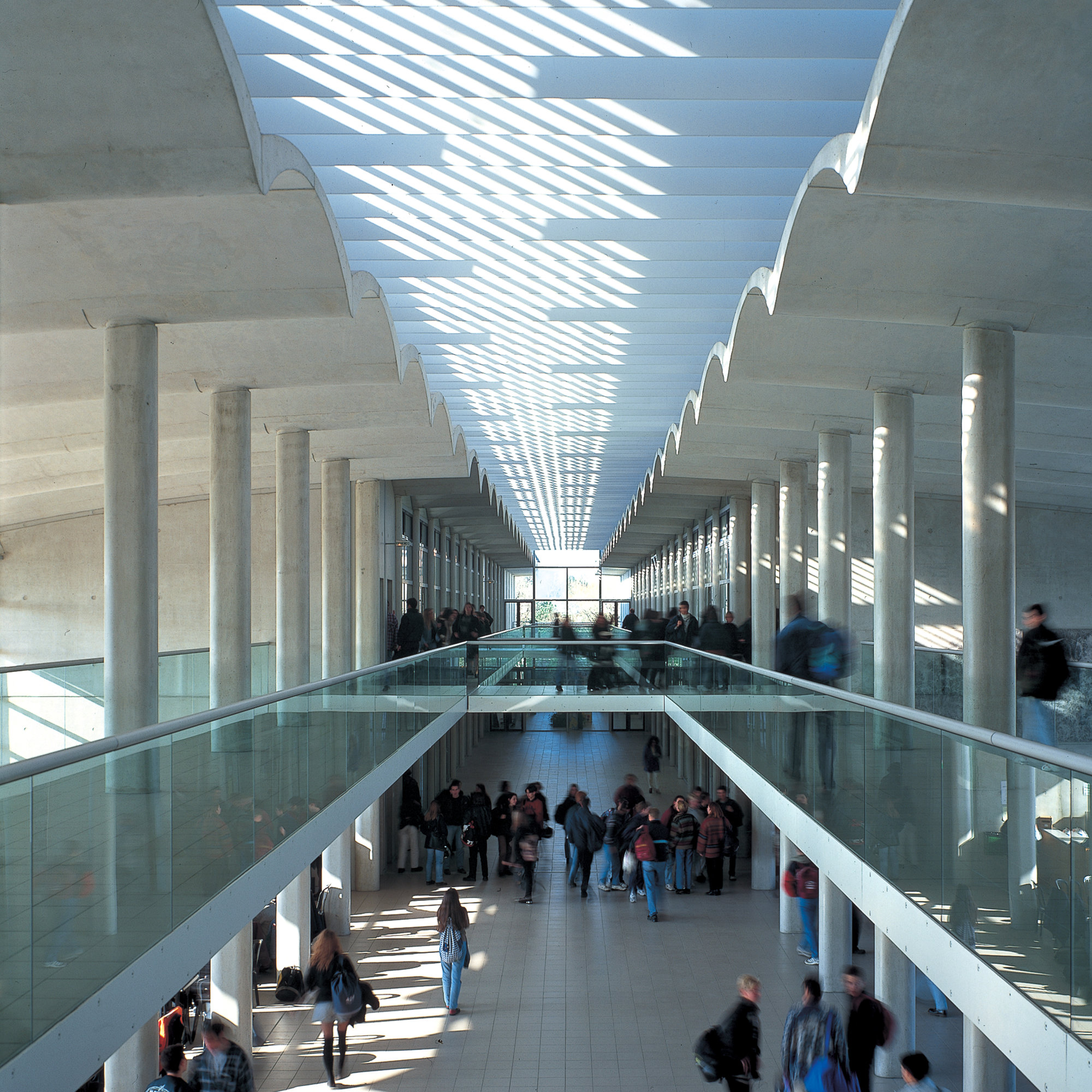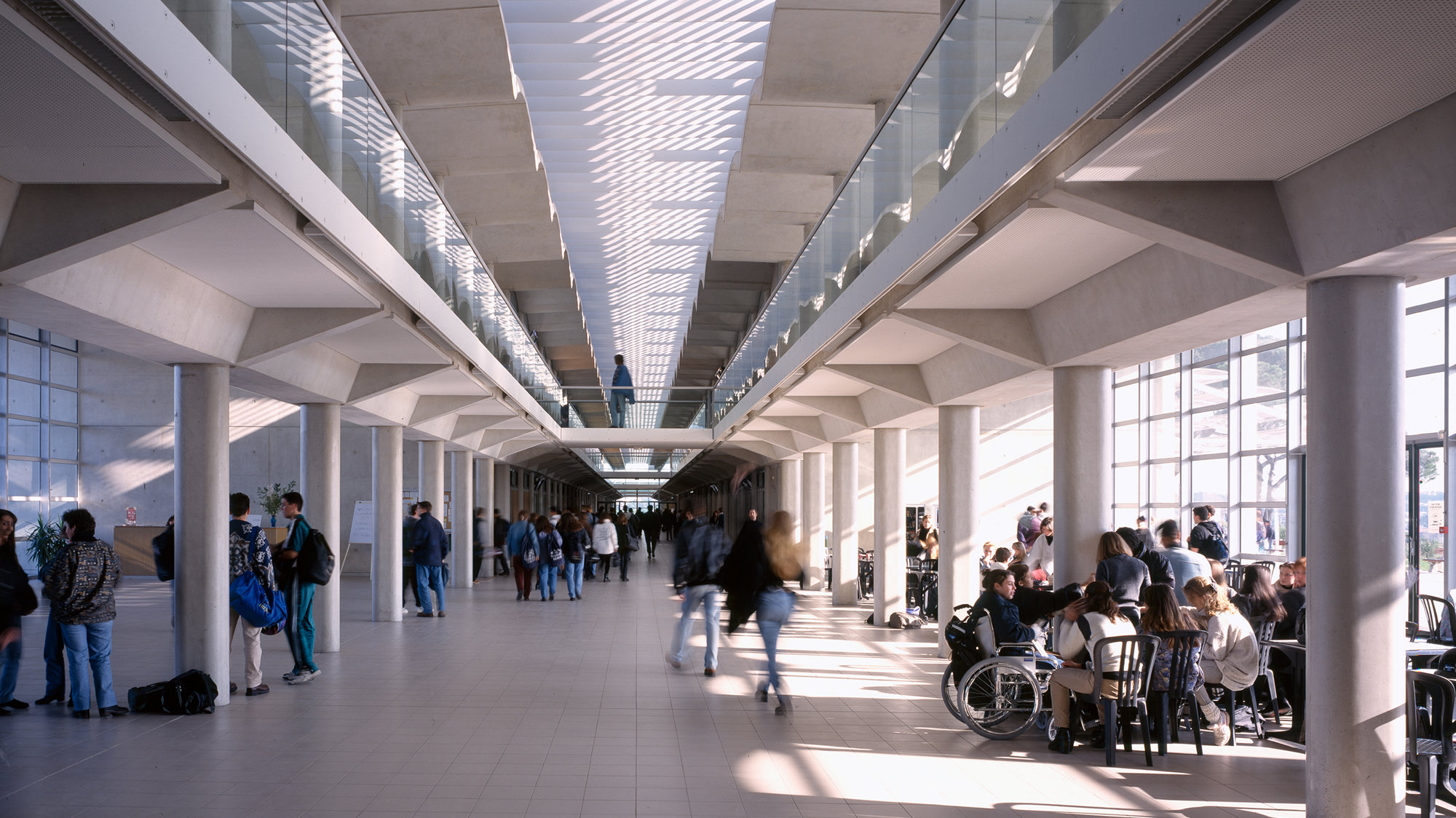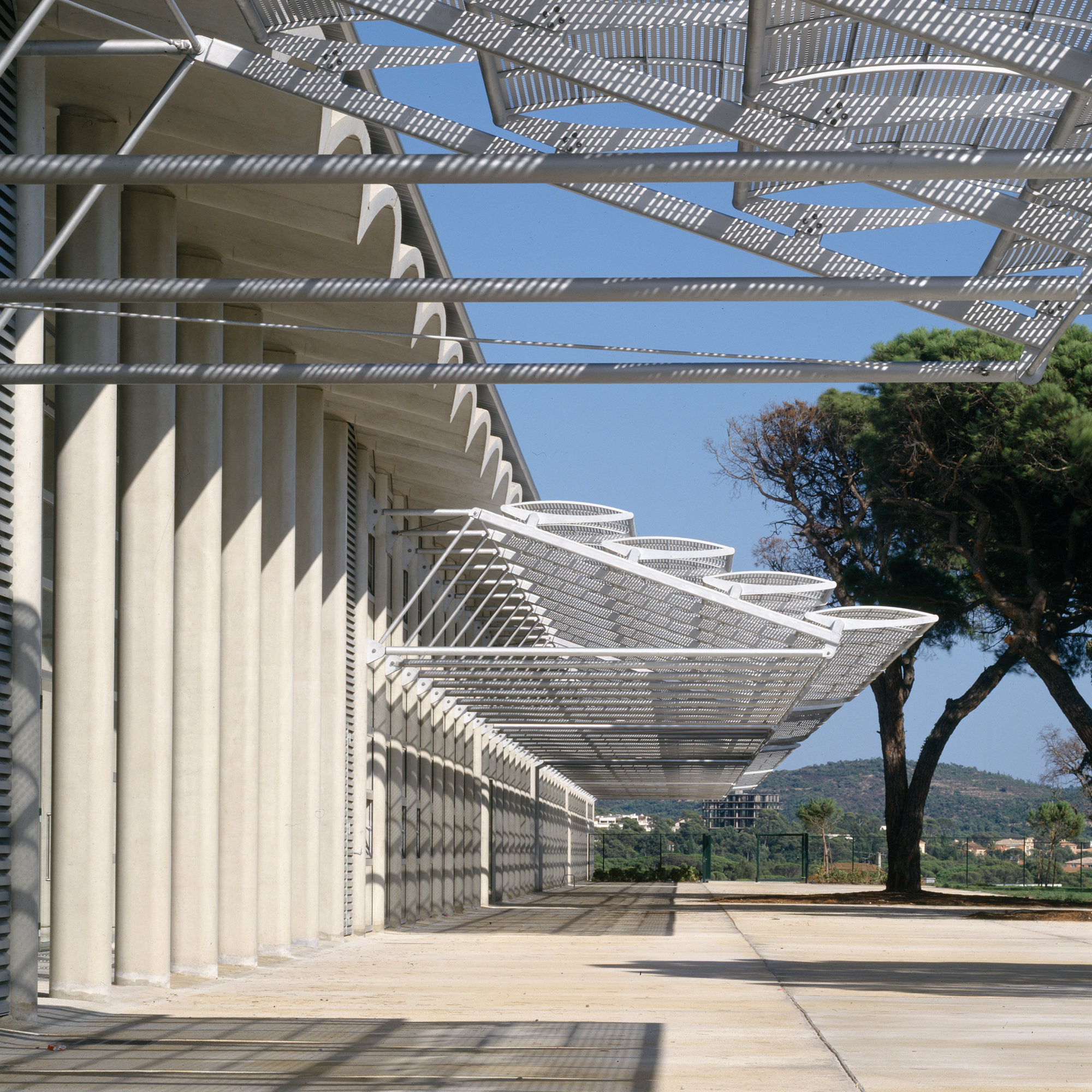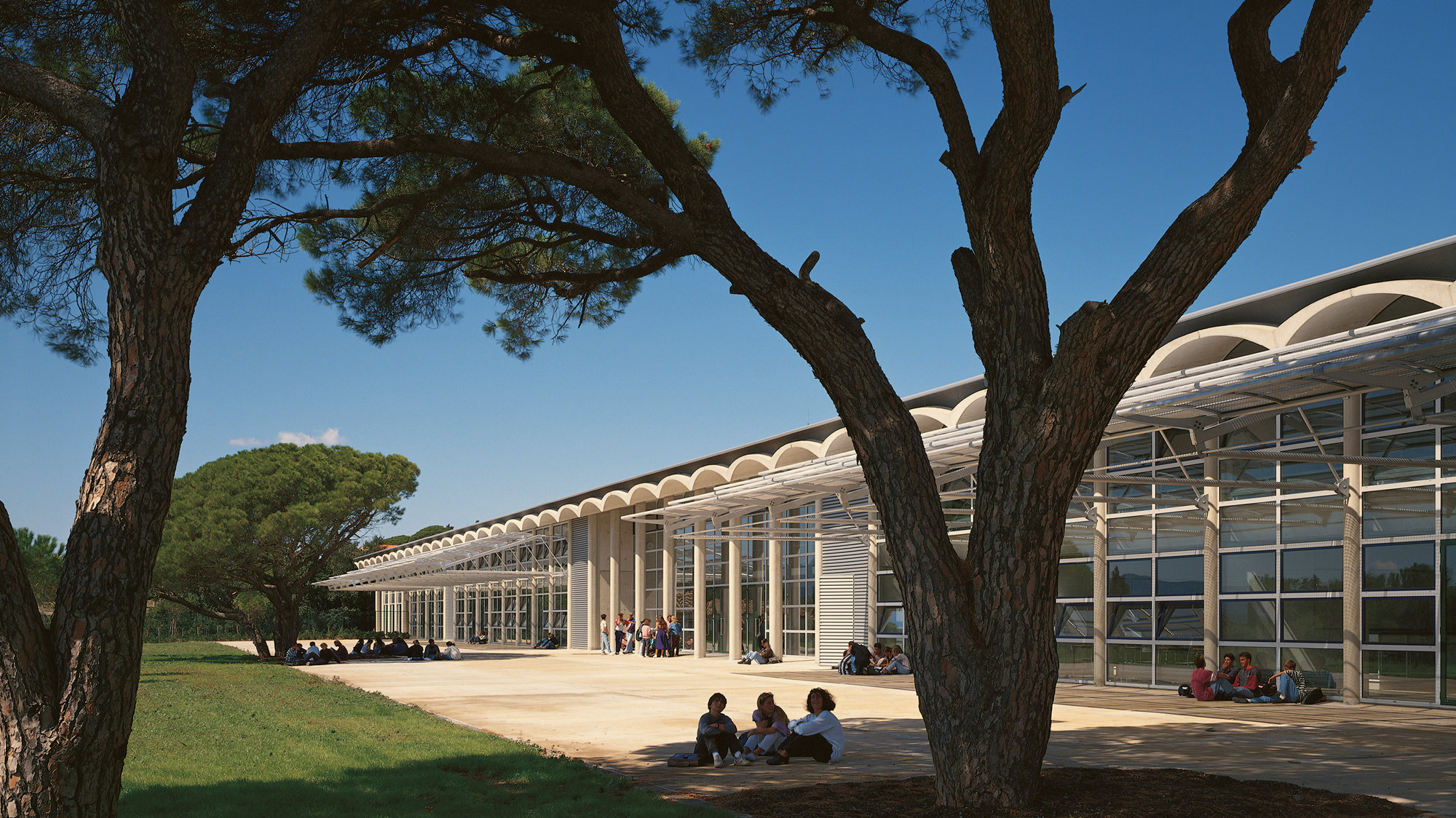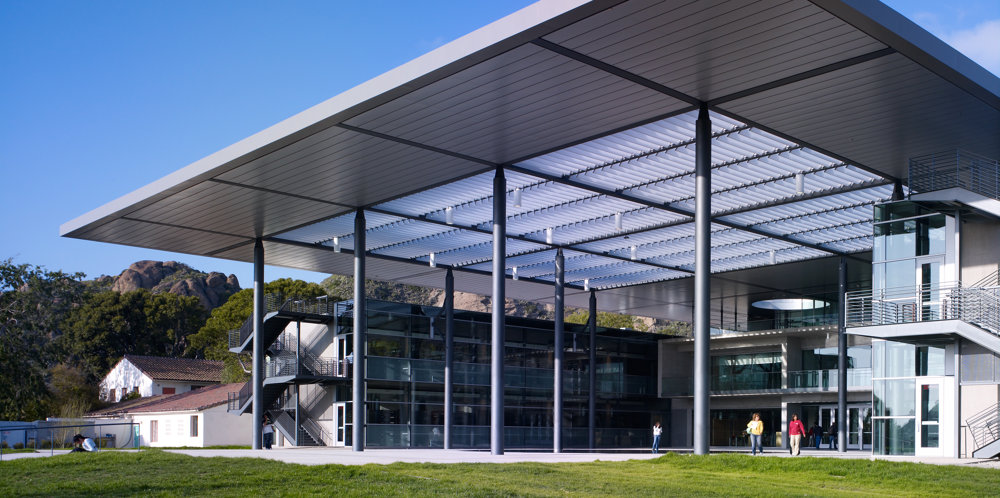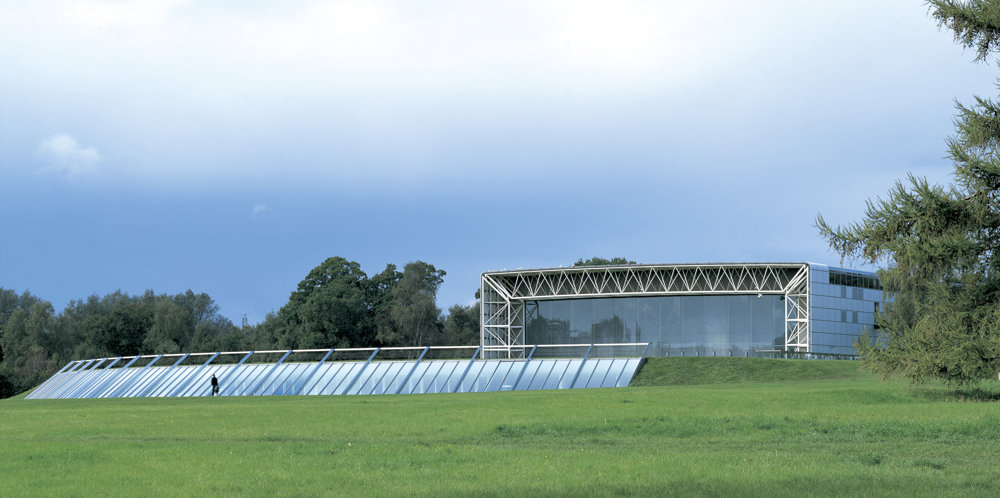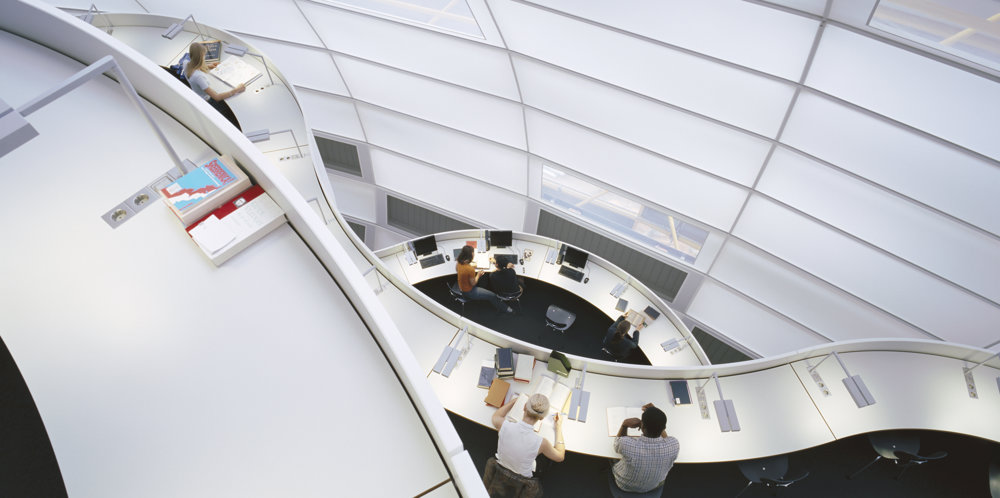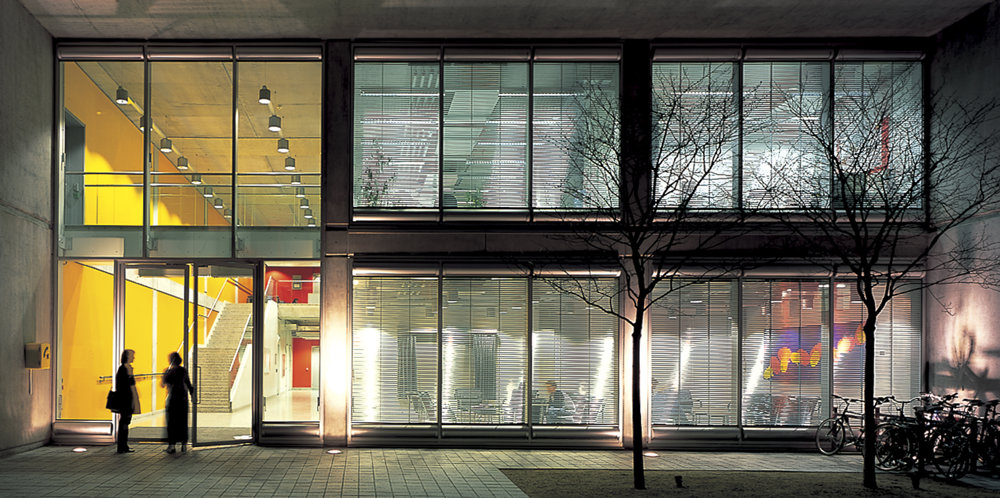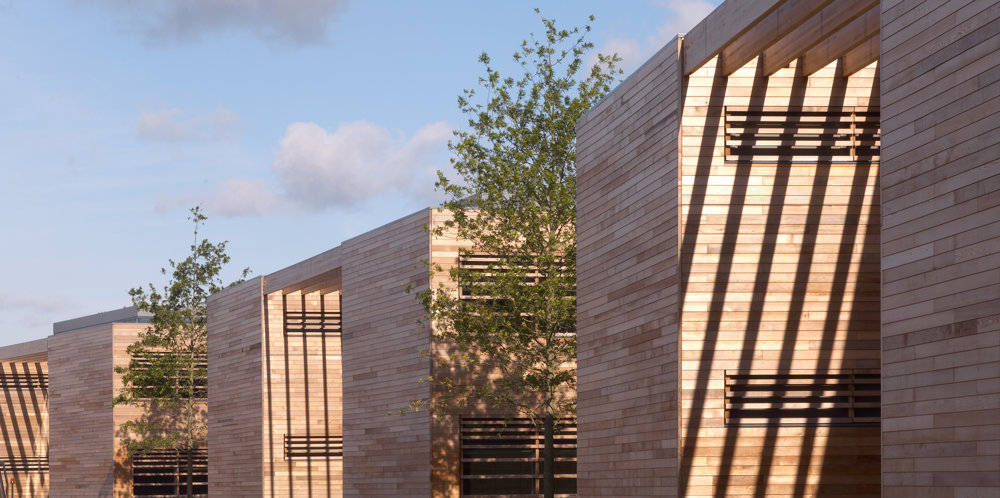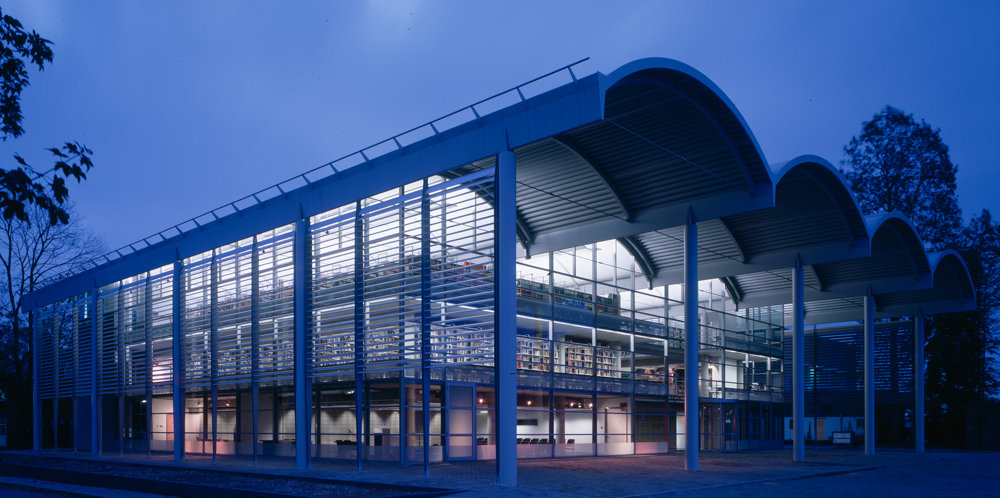The Lycée Albert Camus is located in the rapidly expanding town of Fréjus on the Cöte d’Azur, and as part of the French lycée polyvalent system it offers a semi-vocational education to young people in their final three years of schooling. The school’s design challenges the preconceptions of the established educational building to create a flexible and open structure.
Developed in response to its site and to a low-energy concept for the Mediterranean climate, the school’s linear plan was designed to keep active building services to a minimum. Interestingly, in paring down these services, the most effective ecological diagram was seen to correspond to the most obvious social diagram, with a linear ‘street’ forming the heart of the school both as a natural air movement system and a central circulation space for people. Bisected by an entrance hall, the street, at this point, forms a kind of village square, with its own café and casual seating, acting as a focal point for the students. Fresh air is pulled through the street, while the layering of the roof, with a light metal shield protecting the concrete vaults from the sun, also encourages a cooling flow of air – a technique found in traditional Arabic architecture. Further enhancing the natural ecology of the building, a solar-chimney effect allows warm air to rise through ventilation louvres, whilst brises-soleils along the southern elevation provide a band of dappled shade.
The structure of the school is configured to contain two floors of classrooms alongside double-height reception spaces, and is oriented to separate a public entrance to the north from a more private, shaded southern edge. Throughout, materials were chosen in response to the climate and to exploit local construction expertise, notably the exposed concrete frame, which comprises simple repetitive elements and continues the French tradition of high-quality in-situ concrete. The high thermal mass of this structure allows it to act as a ‘heat sink’, slowing the rate of temperature change within the building and enabling it to be cooled naturally without mechanical refrigeration.









